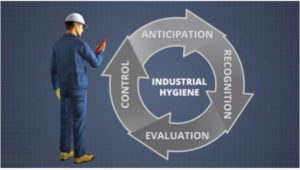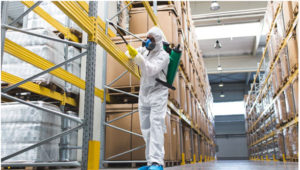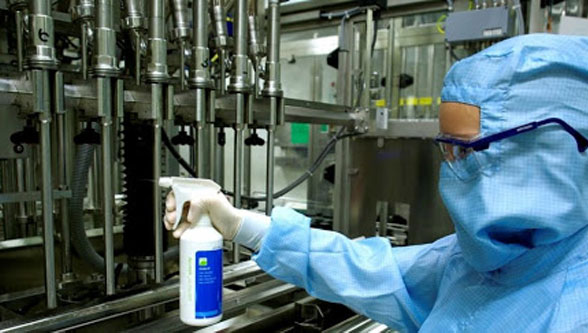The Covid 19 pandemic has not only affected industries across sectors, it has also set new hygiene parameters. Ironically, despite knowledge and awareness industrial hygiene and safety measures never really got their proper due. Apart from large organisations, the ones lower in the hierarchy never emphasised on these aspects. However, after the pandemic breakout things are changing rapidly.
Nearly 275 people die in the United States daily from occupational injuries and illnesses, many of them from workplace hazards they were exposed to long ago. The situation in India is far worse.
“One of the challenges is workplace illnesses don’t happen right away,” says Lawrence Sloan, CAE, CEO of the American Industrial Hygiene Association. “If you know you need to wear personal protective equipment to protect your hearing in 20 or 30 years, you may not see the immediate value and not always wear your personal protective equipment.”
AIHA takes a three-pronged approach to outreach. First, the organisation educates professionals to help them understand workplace dangers and how to protect themselves. Second, it reaches out to business leaders to ensure they invest in the personal protective equipment and training employees need to be safe. The third prong is aimed at high school students, getting them to think about being safe in their first jobs, so they carry that mentality forward into their careers.

It is common these days to tell custodians to wear personal protective equipment and wash their hands, but it is often done as a directive without explanation why these are important. Helping custodians understand some basic concepts will increase their compliance and helps develop their professionalism.
Hazard is the potential for harm to happen. Examples of hazards include pathogens like the n-coronavirus or driving a car at high speed during inclement weather. Each can lead to death or serious injury.
Risk on the other hand is the likelihood for harm to happen. For example, sharks are extremely hazardous with 140 shark attacks in 2019. While sharks are hazardous, the risk or likelihood of getting eaten by a great white is extremely low.
Thus, one of the key lessons to be learned is that hazards are extremely important to know, but custodians also need to know the risk of harm actually happening.
Controls
Controls are the things we can put in place to reduce risk. Examples of controls include wearing personal protective equipment, swimming inside a steel-barred cage to keep sharks away and driving more slowly and turning on windshield wipers when driving in inclement weather. Controls are the things that can be done to reduce the risk that harm will happen.
Understanding hazards, risks and controls is precisely the reason we can work in hazardous situations such as cleaning our schools during the coronavirus while reducing the risk of harm to health.
Routes of Exposure
There are four basic ways to be affected by a hazard. These are inhalation (breathing), ingestion (eating or drinking), absorption (skin contact) and injection (literally injecting it into the body). It is important to understand how custodians are exposed to a specific hazard because this identifies the personal protective equipment (controls) appropriate to reduce the risk of harm.
Relative to the coronavirus, the primary route of exposure is inhalation. This is why CDC recommends using face coverings to reduce the risk of harm from the virus. Whereas a floor stripping solution’s biggest route of exposure is from skin contact as a high pH floor stripper can leave a custodian’s skin and eyes permanently damaged. Thus, controls for a floor stripper includes using personal protective equipment such as appropriate shoes, aprons, long-sleeved shirts, gloves and goggles.
Dose Makes the Poison

Dose is the quantity or amount of the hazard combined with the length of time by which a custodian or other is exposed. This concept is important for two reasons.
The first is that it helps us understand the importance of ventilation. While the hazard remains high, but by increasing ventilation or spending less time in a space, the risk of harm can be reduced.
It is also important to understand that some things like those that are carcinogenic (cause cancer) or bioaccumulate (at low doses they may not cause harm, but these compounds do not go away and continue to build-up in the body until harm results) should be avoided altogether which is one of the reasons that green cleaning chemicals are recommended.
People Differ
The final issue is that people differ. For example, people with health issues such as a compromised immune system due to cancer treatments, respiratory issues such as asthma, women who are pregnant or nursing babies, elderly staff members, and others may be more at risk compared to an otherwise healthy 40-year-old.
Controls and other measures can be put in place to reduce the risk of harm to custodians and others, and also increase the compliance through understanding why personal protective equipment, ventilation and other related issues are important to protecting health during Covid – 19.
It is expected that the global industrial protective clothing and equipment market by revenue would grow at a CAGR of over six per cent during 2019-2025 period.
According to estimates the global industrial protective clothing and equipment market size should cross $69 billion by 2025, growing at a promising rate. This market growth can be attributed to the growing occurrence of workplace-related accidents and injuries across the globe. Globally, numerous accidents and injuries happen primarily due to falling objects, chemical reactions, and unhygienic working conditions. Industrial mishaps have increased globally at construction sites, mining, and electric shocks in the electrical, industrial sector. Approximately 40 per cent of workers suffer from such fatalities in the industrial workplace worldwide. Hence, the growing incidence of disease burden globally, followed by growing unmet needs for hygiene and safety protection, are expected to drive the market.
Several industries have been majorly impacted by the spread of COVID-19, including construction, mining, automotive, oil and gas, and electronic and semiconductor. At the moment, industrial protective clothing and equipment used in such industries have a low demand due to the ongoing shutdown of operations since the outbreak of the virus.
Against this backdrop, safety gears such as masks, face shields, gloves, goggles, aprons, lab coats, coveralls, and a few other protective clothing and equipment are expected to witness an increase in demand during COVID-19 restrictions.

